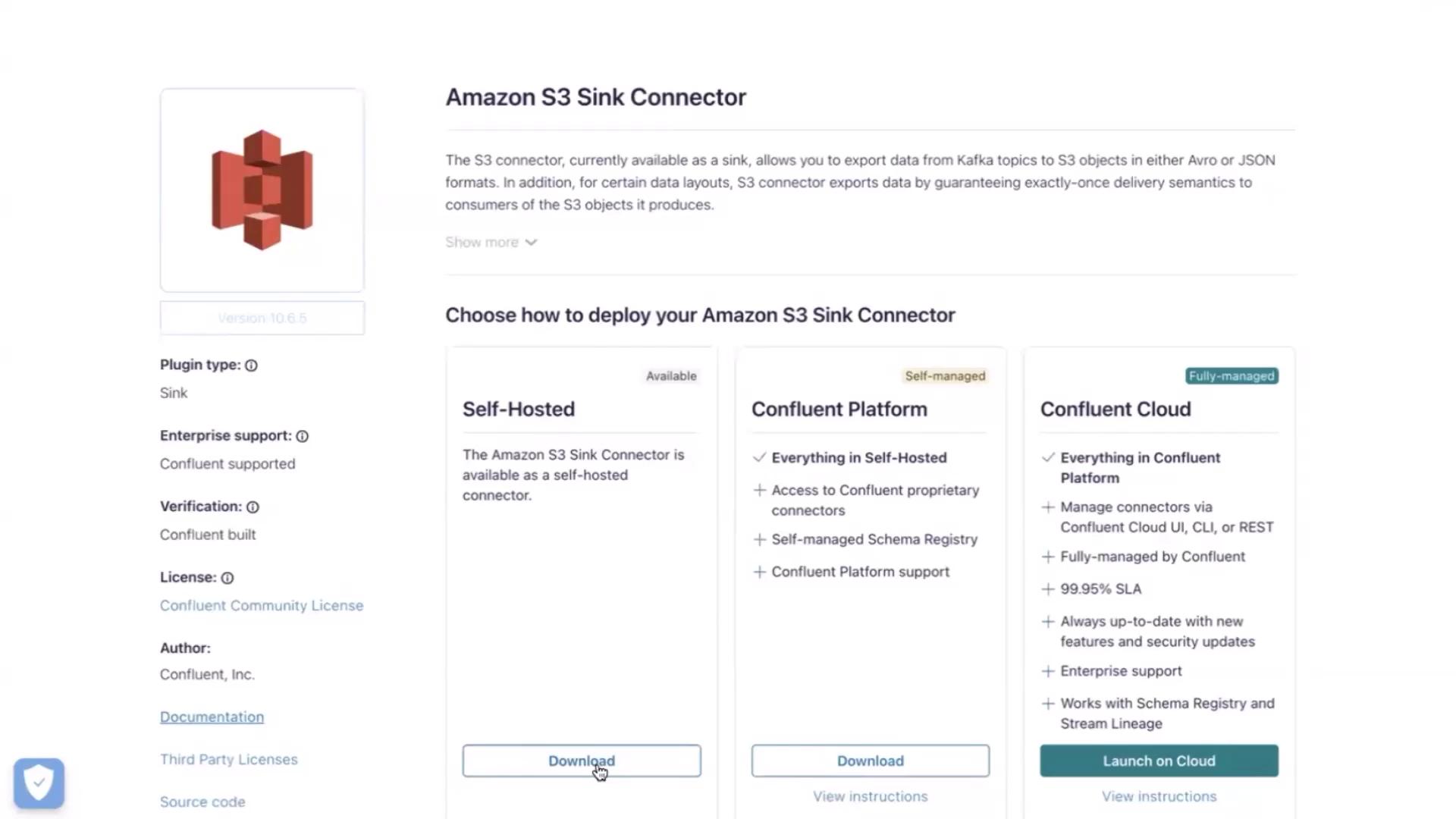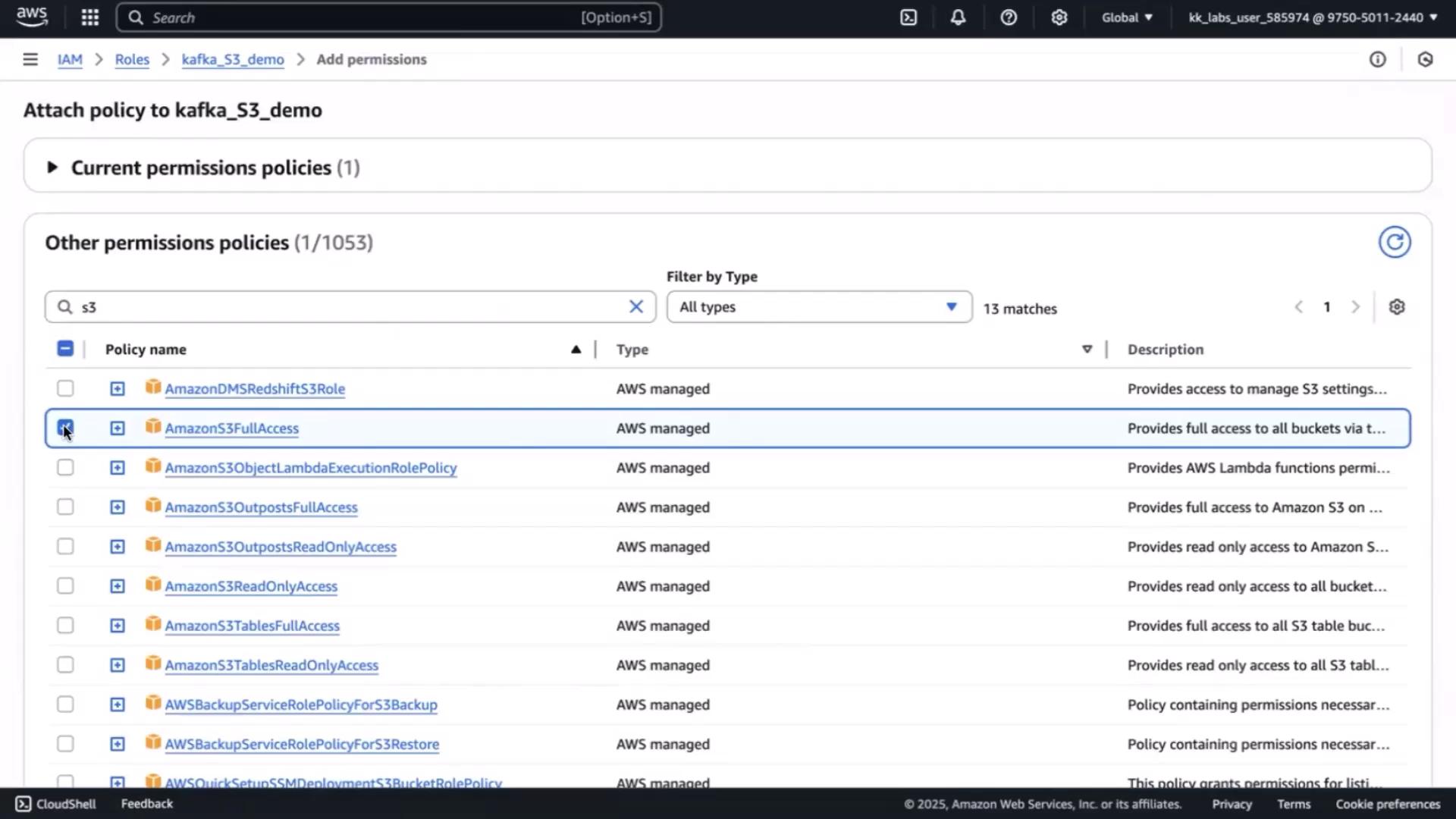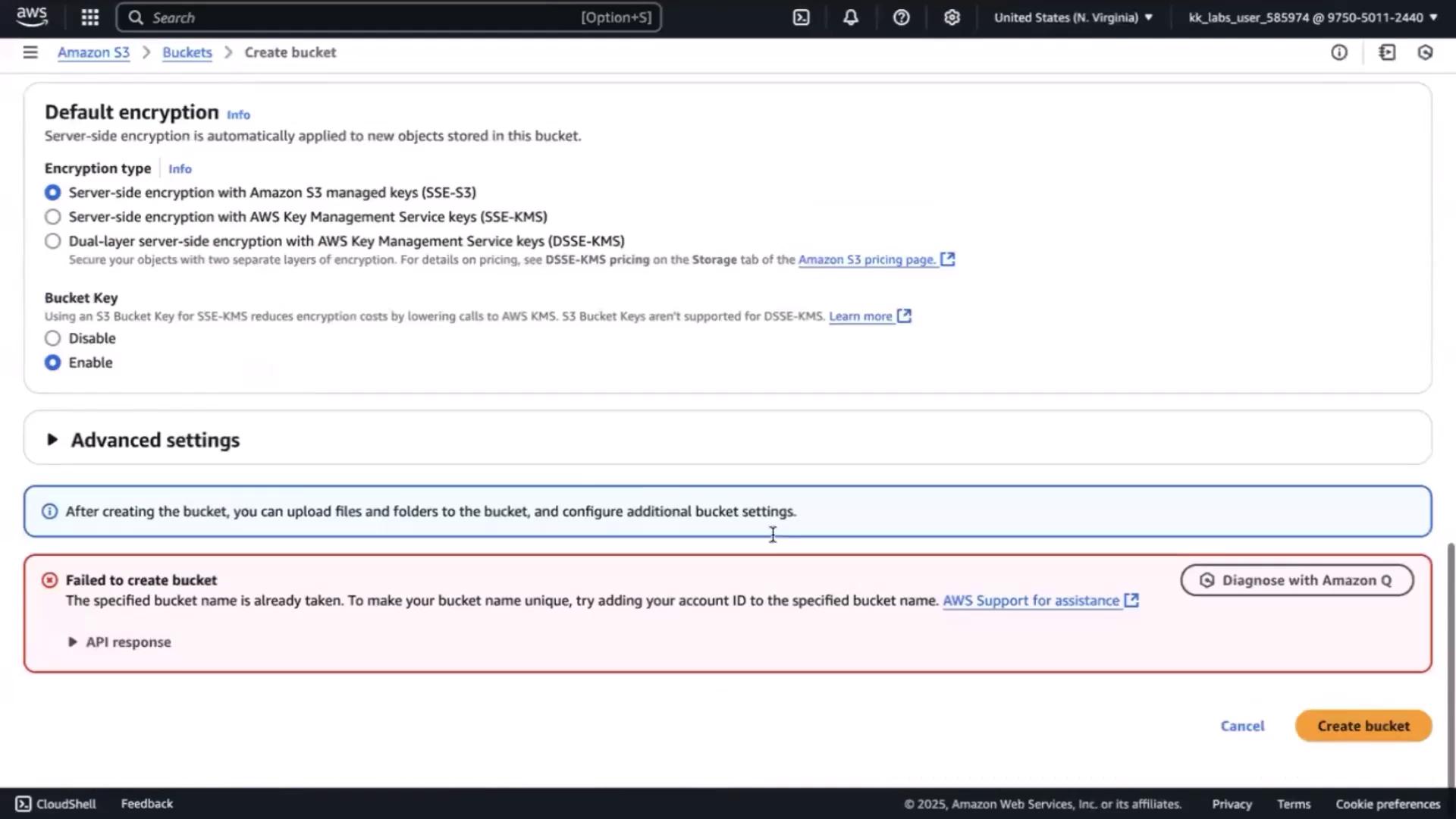Event Streaming with Kafka
Kafka Connect Effortless Data Pipelines
Demo Setting up S3 Kafka Connect
In this tutorial, we’ll configure Kafka Connect to stream events from a Kafka topic into Amazon S3 using Confluent’s S3 Sink Connector. By the end, you'll have a working pipeline that writes data from Kafka into an S3 bucket in JSON format.
Prerequisites
- A running Kafka broker on your EC2 instance.
- AWS CLI installed and configured on the same instance.
- An IAM role attached to your EC2 instance with S3 access.
Note
Keep your Kafka broker terminal open throughout this demo. Closing it will disconnect you from the cluster.
1. Open a new terminal on the EC2 instance
Switch to root and navigate to your home directory:
sudo su -
cd ~
2. Download the S3 Sink Connector plugin
We’ll fetch the Amazon S3 sink connector ZIP from Confluent Hub. In this lab, the ZIP is hosted in an S3 bucket:
aws s3 cp s3://kafka-s3-jar-file-confluent-lab/confluentinc-kafka-connect-s3-10.5.23.zip .

Warning
If you see a 403 Forbidden error, you need to attach S3 permissions to your EC2 IAM role.
- Open the IAM console, select the role attached to your EC2 instance (e.g.,
kafka_S3_demo), then click Add permissions. - Attach AmazonS3FullAccess (or a least-privilege policy you define).


Retry the download once the policy is attached:
aws s3 cp s3://kafka-s3-jar-file-confluent-lab/confluentinc-kafka-connect-s3-10.5.23.zip .
On success, verify the file and unzip:
ls -l
unzip confluentinc-kafka-connect-s3-10.5.23.zip
ls -lrt
# drwxr-xr-x 6 root root 74 Feb 4 16:28 confluentinc-kafka-connect-s3-10.5.23
3. Configure Kafka Connect
Edit the standalone worker configuration to point at your broker and include the connector plugin path:
vim kafka_2.13-3.0.0/config/connect-standalone.properties
Update or add:
bootstrap.servers=YOUR_BROKER_IP:9092
key.converter=org.apache.kafka.connect.json.JsonConverter
value.converter=org.apache.kafka.connect.json.JsonConverter
key.converter.schemas.enable=true
value.converter.schemas.enable=true
offset.storage.file.filename=/tmp/connect.offsets
offset.flush.interval.ms=10000
plugin.path=/root/confluentinc-kafka-connect-s3-10.5.23
Save and exit.
4. Create the S3 Sink connector properties
Define the connector configuration in config/s3-sink-connector.properties:
vim kafka_2.13-3.0.0/config/s3-sink-connector.properties
Paste and customize your bucket name:
name=s3-sink-connector
connector.class=io.confluent.connect.s3.S3SinkConnector
tasks.max=1
topics=cartevent
s3.bucket.name=kafka-connect-s3-sink-example-01
s3.region=us-east-1
flush.size=5
rotate.schedule.interval.ms=60000
storage.class=io.confluent.connect.s3.storage.S3Storage
format.class=io.confluent.connect.s3.format.json.JsonFormat
partitioner.class=io.confluent.connect.storage.partitioner.DefaultPartitioner
timezone=UTC
key.converter=org.apache.kafka.connect.json.JsonConverter
value.converter=org.apache.kafka.connect.json.JsonConverter
key.converter.schemas.enable=false
value.converter.schemas.enable=false
behavior.on.null.values=ignore
Create the S3 bucket
In the S3 console, click Create bucket and specify the same name.
If it’s taken, append a suffix (e.g., -01) and retry.


5. Start Kafka Connect
Launch the standalone Connect worker:
cd kafka_2.13-3.0.0
bin/connect-standalone.sh \
config/connect-standalone.properties \
config/s3-sink-connector.properties
Inspect the logs. You should see the connector initialize, subscribe to the cartevent topic, and begin streaming data into S3.
Links and References
Watch Video
Watch video content